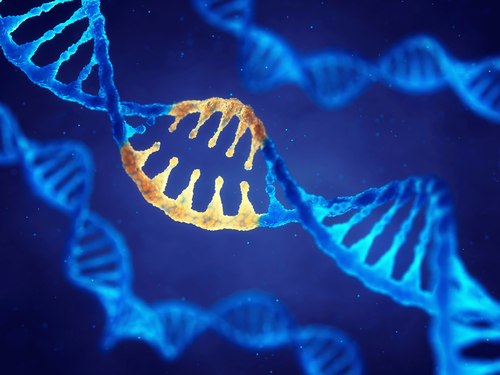Researchers Discover How Mitochondrial DNA is Transferred From Mother to Child

Researchers in Spain have made a discovery that has important implications for treatment strategies to prevent mitochondrial diseases from being passed from mother to child.
Specifically, they found that the mechanisms involved in the transfer of mitochondrial genetic material from a mother to her offspring is controlled at two distinct times: during egg development before conception, and at the early stages of embryo growth.
Their study, “Regulation of Mother-to-Offspring Transmission of mtDNA Heteroplasmy,” was published in Cell Metabolism.
Mitochondrial DNA (mtDNA) is the DNA that’s solely found in the cellular energy factories called mitochondria. It is important for many of the biochemical pathways involved in the production of cellular energy, and any defect in mtDNA can lead to mitochondrial disease, hindering the cells’ ability to generate enough energy in tissues such as muscles and the brain.
Importantly, mitochondrial DNA is inherited from the mother, while the other type of DNA, nuclear DNA, is inherited from both parents.
A cell can have some mitochondria with a mutation in their mtDNA and some that do not, a phenomenon known as heteroplasmy. Most disease-causing mutations are only present in a percentage of all mitochondrial DNA molecules, therefore the mutated mtDNA will only cause disease when its copy number exceeds a biologically defined threshold.
So far, animal studies have not helped to clarify how the variation happens when mtDNA is transferred from mother to offspring.
In the study, investigators at the Spanish National Center for Cardiovascular Research set out to investigate the transfer of mitochondrial DNA from mother to offspring in mice. Animals were engineered to have two distinct mitochondrial DNA stably coexisting in every cell.
Results revealed that in a heteroplasmic scenario — when the mother’s mitochondria contain more than one variant of mtDNA — the transfer of the mother’s mitochondrial genetic material to her offspring is controlled at two distinct times during development: before conception, during egg (oocyte) synthesis, and at the early stages of embryo development.
“This control is aimed to prevent the co-occurrence of various types of mitochondrial DNAs in the new individual,” which, in turn, can cause mitochondrial disease, said researchers in a press release.
“These findings reveal the complex mechanisms underlying the decision to select one mitochondrial genome or another, and the reason for this choice,” said José Antonio Enríquez, PhD, the study’s lead author.
mtDNA heteroplasmy was found to alter embryo metabolism by inducing the mitochondria to produce abnormally high amounts of free radicals, compromising the cells’ ability to detoxify themselves, which consequently changes the morphology of the inner membrane of the mitochondria and endangers cellular energy production.
“Understanding the mechanisms that regulate the segregation of the mitochondrial genome is necessary for the development of strategies to prevent mother-to-child transfer of mutated mitochondrial DNA that cause mitochondrial diseases,” said the study’s first-author Ana Latorre-Pellicer, PhD.
Although heteroplasmy is a rather rare phenomenon, knowing how the mtDNA inheritance process works between mothers and their offspring is important, for instance, for scientists to learn how to prevent different types of mtDNA from co-existing in the same cell following mitochondrial replacement therapy, a strategy that can be used on people with severe mitochondrial disease to avoid passing the disease to their children. The technique used to create a so-called three-parent embryo involves transferring the mother’s nuclear DNA (the type of DNA that encodes most of the genome) into a donated egg with healthy mitochondria, thereby eliminating the chance of the baby carrying the mother’s mitochondrial DNA mutation.






